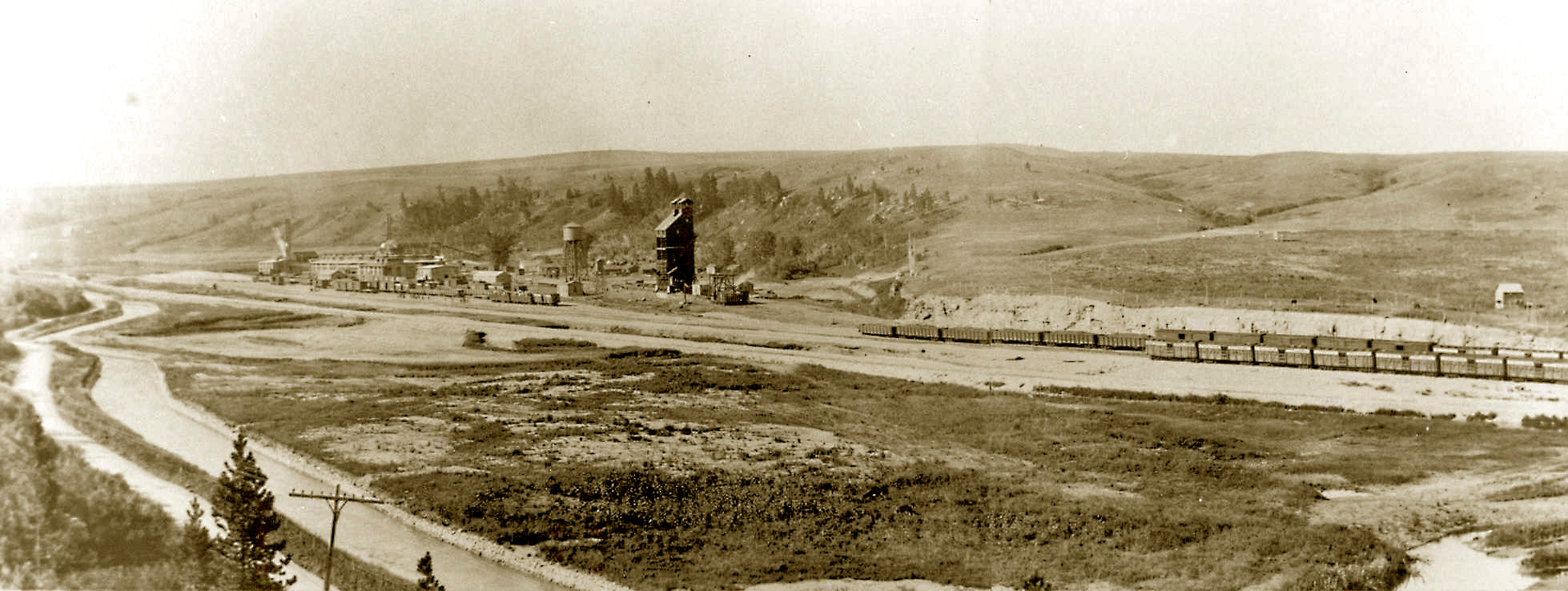
24 Jul Images of the West: Restoring Lewistown’s “Nectar of the Gods”
THE LOCALS UNABASHEDLY CALL THEIR COLD, fertile Big Spring Creek “the lifeblood of Lewistown,” “Lewistown’s crown jewel,” and “nectar of the Gods.” And no wonder. Its headwaters, born of snowmelt and Big Springs, one of the world’s largest spring water complexes, refresh them with pure, untreated drinking water that “doesn’t see the light of day until it flows from the tap.” Even better, the fly fishers would say, the treasured water nourishes aquatic and riparian habitat that perpetuates remarkable rainbow and brown trout fishing. They love 1,500 catchable trout per creek mile, an impressive number for a spring creek. The affection and praise for the creek today, and even protective regard for it, seems a paradox, given the earlier acts of degradation featured in its history.
Big Spring Creek flows northwest for 30 miles at about 130 cfs (cubic feet per second) through meadows and foothills until reaching its confluence with the Judith River. Along the way, progressive-minded settlers modified the meandering creek in favor of such economic engines as transportation and agriculture. Using shovels and brawn, settlers dug irrigation ditches as early as 1884. By 1886, the Jackson brothers diverted water to turn the wheel of their flour mill. Around 1910, railroad workers straightened a section of creek to make room for a switching yard, a site now known as Brewery Flats. Between 1910 and 1922, city fathers tunneled the creek through an 840-foot long concrete conduit beneath the central business district, enabling the district’s expansion by three blocks.
Additionally, at some point somebody set off the invasion of non-native fish, rainbow and brown trout, in Big Spring Creek. The introduced rainbow hybridized with the endemic Westslope cutthroat trout, but both rainbows and browns were responsible for displacing the natives.
Every unfavorable condition possible for Westslope cutthroat trout existed in Big Spring Creek by the 1920s. Without the coldest, cleanest water, cutthroats are among the first in the aquatic ecosystem to go belly up. We will never know how many cutthroats darted through the pools and riffles when shadows of the Assiniboine and Blackfeet fell over the water as they walked along willow-fringed banks to fish. One of the creek’s early non-Indian visitors, Charles A. Messiter, gives us a glimpse, circa 1878, in his book, Sport and Adventure Among the North American Indian: “The valley … was intersected by a number of small clear trout streams which, although only a few yards wide, held trout to 3 and 4 lbs. in weight, while in the willows along the banks you could always jump deer.”
If we surrender ourselves to the lulling sounds made by the water and breeze, Big Spring Creek, like many creeks and rivers, has the ability to transport us to a place where we probably don’t want to go: imagining the creek as the aquatic utopia of Messiter’s time. We regret the fate of the Westslope cutthroat, historically the most widely distributed cutthroat trout. Today, the species occupies about half of its former range. Pockets of isolated, genetically pure populations swim in the clean, cold water of Big Spring Creek’s small tributaries where natural aquatic barriers protect the fish from hybridization and competition with non-natives.
The ability to understand how to best live with Big Spring Creek didn’t improve after the 1920s. The creek became a casualty of the Cold War. In 1960, Minuteman missile launching installations were coming to central Montana and the company that would build them, Boeing, needed to house its workers. Boeing leased land from George Machler to build a 100-space mobile home park. Bulldozers chugged into the creek and modified what is now called “the Machler section.” In the end, a 2,500-foot channel lined with rip-rap, or erosion-preventing rocks and concrete, replaced 6,300 feet of meandering meadow stream.
“The earliest fish population data on Big Spring Creek is from the 1960s, but after the time the creek was straightened,” says Anne Tews, fisheries biologist for Montana Fish, Wildlife and Parks (FWP). “Longtime residents still recall the good fishing there.”
One of them, Don Pfau, along with anglers, citizens, and the Chamber of Commerce, fought the development.
“It was a very sad day when they put the Cat in the creek to straighten it,” he recalls. “The site was a beautiful meadow with trees. Pictures of it were used to advertise the area and attract visitors. It was good fishing, and the Jaycees held annual kids’ fishing contests there.”
Karl Gies has fished Big Spring Creek for 60 years and, at age 73, is still fishing it. He recalls “spectacular fishing” on the Machler section in the 1940s.
“I fished it as much as I could,” he says. “Mom rigged up my bike so I could carry my fly rod on it. The fish averaged 12 to 14 inches, and there were lots of them. When I was about 14, I caught a 4½-pound brown and won both the fish-of-the-week, and the fish-of-the-month, contests sponsored by Nate’s Sporting Goods store.”
As a young man Gies headed to the same fishing holes, at least until the day bulldozers roared in the water.
“I went to my father’s bar,” he remembers. “I didn’t drink much and it was mid-afternoon. I told Dad I needed a stiff drink. He asked why smoke was coming out of my ears. I said, ‘Dad, bulldozers are in Spring Creek straightening it.’ It was a terrible thing. Forty-eight years later the results of that are still causing damage.”
The modification of Big Spring Creek from slow moving and serpentine to fast-moving, rip-rapped channel incensed many locals, whether they fished the creek or not. The overriding sentiment wasn’t good: They had lost something they treasured and were outwardly vocal about it.
“My father, John, helped Uncle George straighten the creek,” says Mark Machler who now owns the property. “It’s been a black mark on the family name for years. I’ve been told straightening the creek is a textbook example of what not to do.”
In fairness to the brothers, they acted on an opportunity to improve a piece of worthless brushy creek bottom they couldn’t farm. In the end, they gained 40 to 50 acres, which they used to grow hay and graze cattle. Says Mark, “I’ve had older guys tell me, ‘You don’t have to apologize for it because that’s the way we did things back then.’”
As years passed, the Machler brothers’ misdeed became the poster child calling for legislation that would protect the natural integrity of creeks and rivers. The Montana legislature listened and passed The Streambed and Land Preservation Act of 1975, also known as the 310 Law.
“The straightening of Big Spring Creek was the impetus for the law,” says Darlene Edge, FWP land conservation specialist.
Fifty years after bulldozers ripped Big Spring Creek to build the mobile home park and Gies headed to his father’s bar, our understanding of watersheds and appreciation for them runs deeper, more clearly, judging from the Machler Big Spring Creek Restoration Project now underway. The enthusiasm for the project aimed at restoring the section as naturally as possible stems from the Brewery Flats project embraced by locals since its completion in 2000. In 1998, a coalition of citizens, civic and conservation groups, and state and federal agencies watched bulldozers rumble in the creek at Brewery Flats, but this time to help breathe new life into the water.
“Brewery Flats is an amazing success,” says Tews, who assisted with that project and is spearheading the Machler project. “What’s most impressive is the stream length increased by 50 percent and the number of fish has increased as well. Brewery Flats is now about 50 percent pool habitat and was less than 10 percent when we started the project. Some of the increase occurred more than five years after the project was completed.”
She sees no reason why the Machler project won’t equal the success of Brewery Flats. As for Mark Machler, he’s excited to make reparations for his dad and uncle, both of whom have passed away. He entered the project when FWP approached him about an easement on his property. Today, a conservation easement permitting the re-meandering of the creek is in place, and Mark retains agriculture rights.
“I’ve seen sprawl around Bozeman and Billings,” Mark says. “I didn’t want the property developed. I want to keep it green forever.”
Mark admits the easement decreases the value of his land, and that the restoration will reclaim one-third of the hay meadow he now leases. Still, he asserts his highest priority is protecting the property from development and making amends for John and Uncle George.
“My dad wanted an easement, too,” he says. “As information about stream ecology came out over the years, Dad realized straightening the creek wasn’t the right thing to do. Also, the transformation he saw at Brewery Flats impressed him and gave him more of a conservation mindset.”
He mentions another matter that weighed on his decision and interfaces with the creek restoration. “Part of the reason Dad wanted an easement was the possibility of running a city water and sewer line beneath the creek to the county fairgrounds,” Mark explains. “He thought the fairgrounds would be better served with city water and sewer.”
As the landowner, Mark continues to meet with citizens, conservation groups, and state and federal agencies to ensure the restoration comes to fruition. Meanwhile, FWP is working with the Mountain Acres mobile home park, born of the Boeing Company in 1960, and other private landowners to move the project forward. Tews estimates the cost of creating meanders and 45-foot floodplains on both sides of the creek at $1 million dollars, based on a feasibility study and preliminary engineering review by the Fergus Conservation District (FCD).
“A floodplain is a crucial component of a natural stream channel because it provides nutrients to the aquatic food web,” Tews explains. “It dissipates the stream energy after leaving channelized sections. Creating a floodplain will require moving a lot of dirt, and that’s why the project is so expensive. A smaller floodplain may be an option to save money.”
She adds that FWP and FCD have applied for grant funding from various state and federal programs. At a local level, members of the Snowy Mountain Chapter of Trout Unlimited have challenged themselves to raise $100,000 by the end of 2011. Their pledge is that 99 cents of each dollar donated will go directly to creek restoration.
“We’re a small chapter with only 50 members,” says Robert Dunnagan, chapter vice president. “We have $8,000 in the bank, and we have applied for grants. We’re also targeting our community and philanthropic organizations to help raise the money.”
He stresses that the real award of the ambitious undertaking is restoring an entire ecosystem that will benefit both wildlife and people. “The project will reinstate the creek’s natural hydrologic equilibrium and produce a healthy riparian area and streambed,” he explains. “We’ll see an increase in invertebrate insects and better habitat for fish. The area will be more aesthetically appealing and provide opportunities to not only fish, but to tube and hike.”
And to Dunnagan’s list, Tews says she can add a dozen more highlights. She’s optimistic construction will begin in 2012. Over time, natural flooding will help rejuvenate mats of native grasses, stands of willows, and pools for fish, albeit rainbows and browns. In a sense, the restored Big Spring Creek will carry time back to 1962 and beyond. Perhaps soon there will be a soft spring day when a Lewistown youngster will bicycle to the restored creek, and, like the Assiniboine and Blackfeet of old, push through the willows to fish for trout flickering beneath a sun-rippled surface.
Editor’s Note: For more information on the Machler Big Spring Creek Restoration Project, contact Snowy Mountain Trout Unlimited by calling Robert Dunnagan at 406.538.9707.
- The information typewritten onto the back of this photograph reads: Lewistown, Mont. A part of Spring Creek, formerly a meandering creek, which has now been straightened, 4,200 feet of creek were shortened into 2,200 feet of straight chute, destroying
- Erosion on the Machler section of Big Spring Creek will be undergoing restoration, thanks to the success of the Brewery Flats restoration and the support of the community. Photo courtesy of Montana Fish, Wildlife and Parks
- Natural flooding, so critical to the health of creeks and their associated floodplains, ceased when Brewery Flats was channelized. In recent years, spring floods have rejuvenated streamside vegetation and nearby wetlands, deepened pools, and washed si
- At various times from the early 1900s to the mid-1980s, Brewery Flats was the site of a railroad yard, coal mine, oil refinery, feedlot, and, as the name indicates, a brewery. Photo courtesy of Lewistown Library Archives



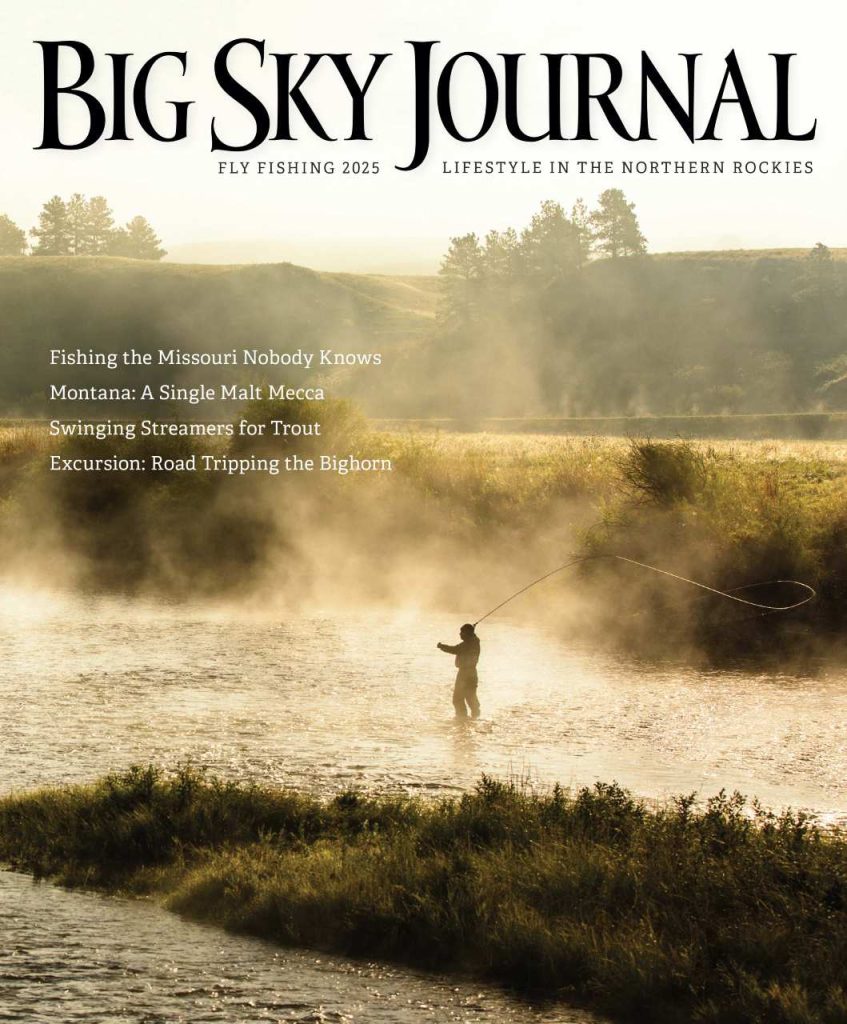
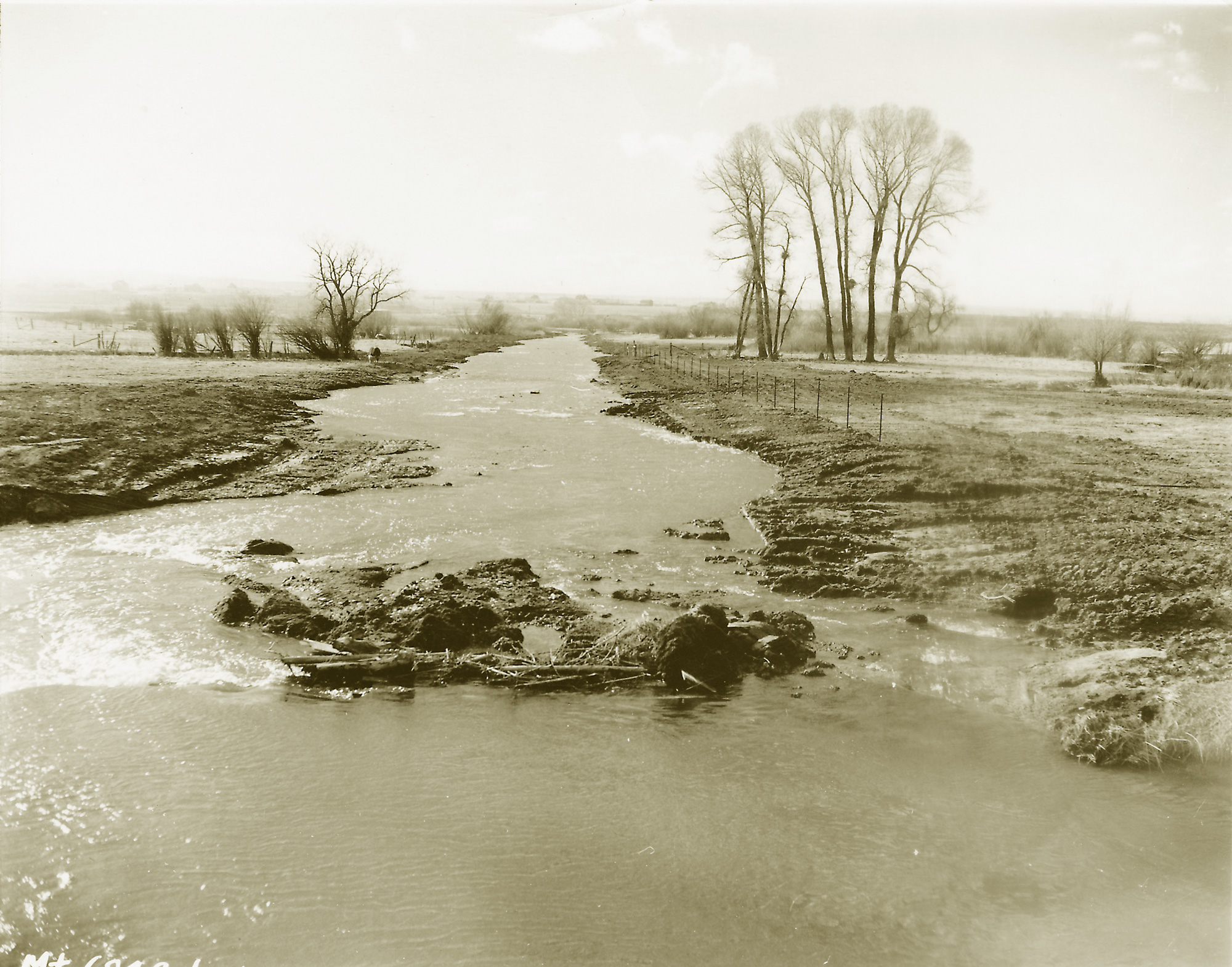
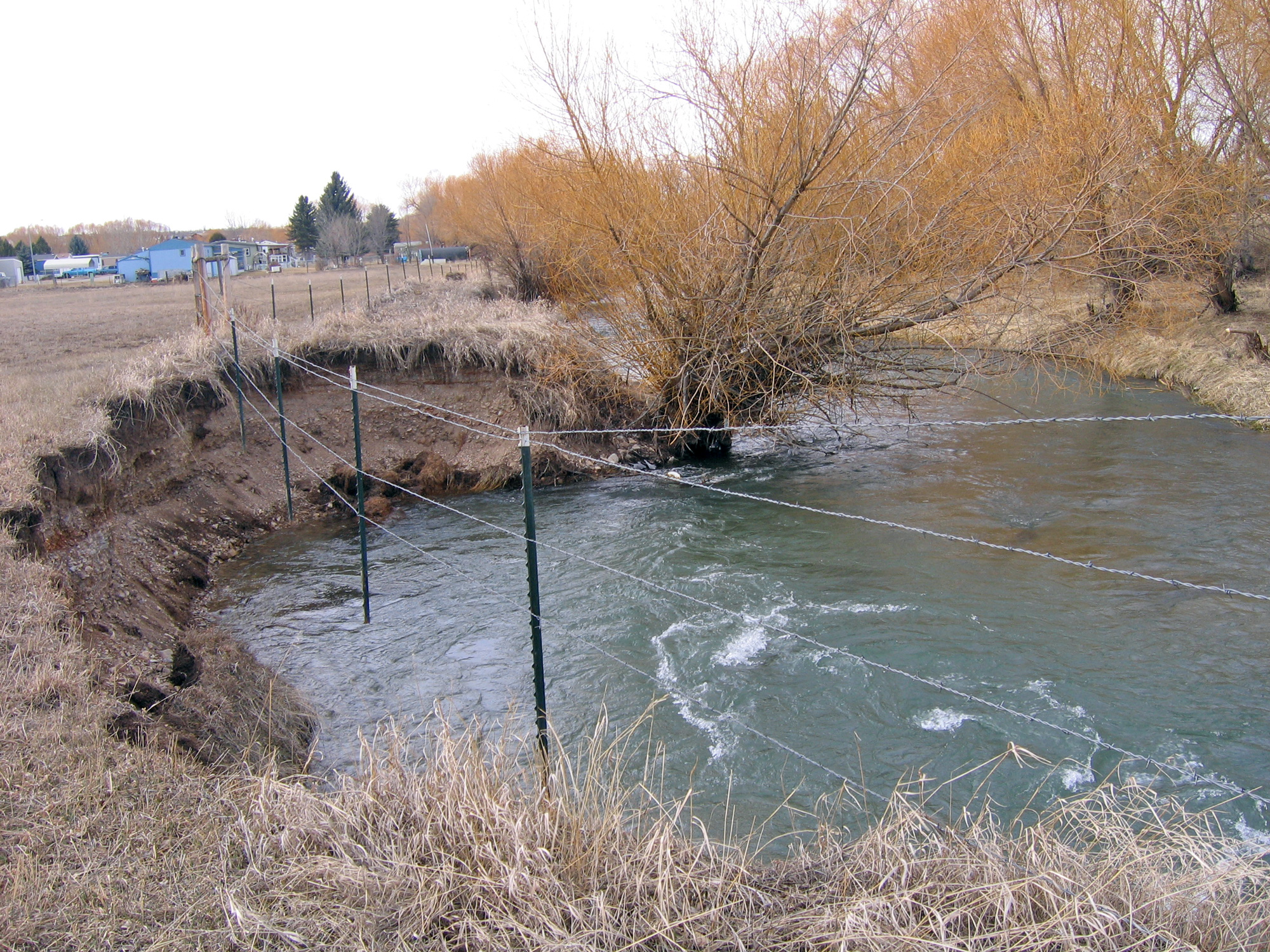
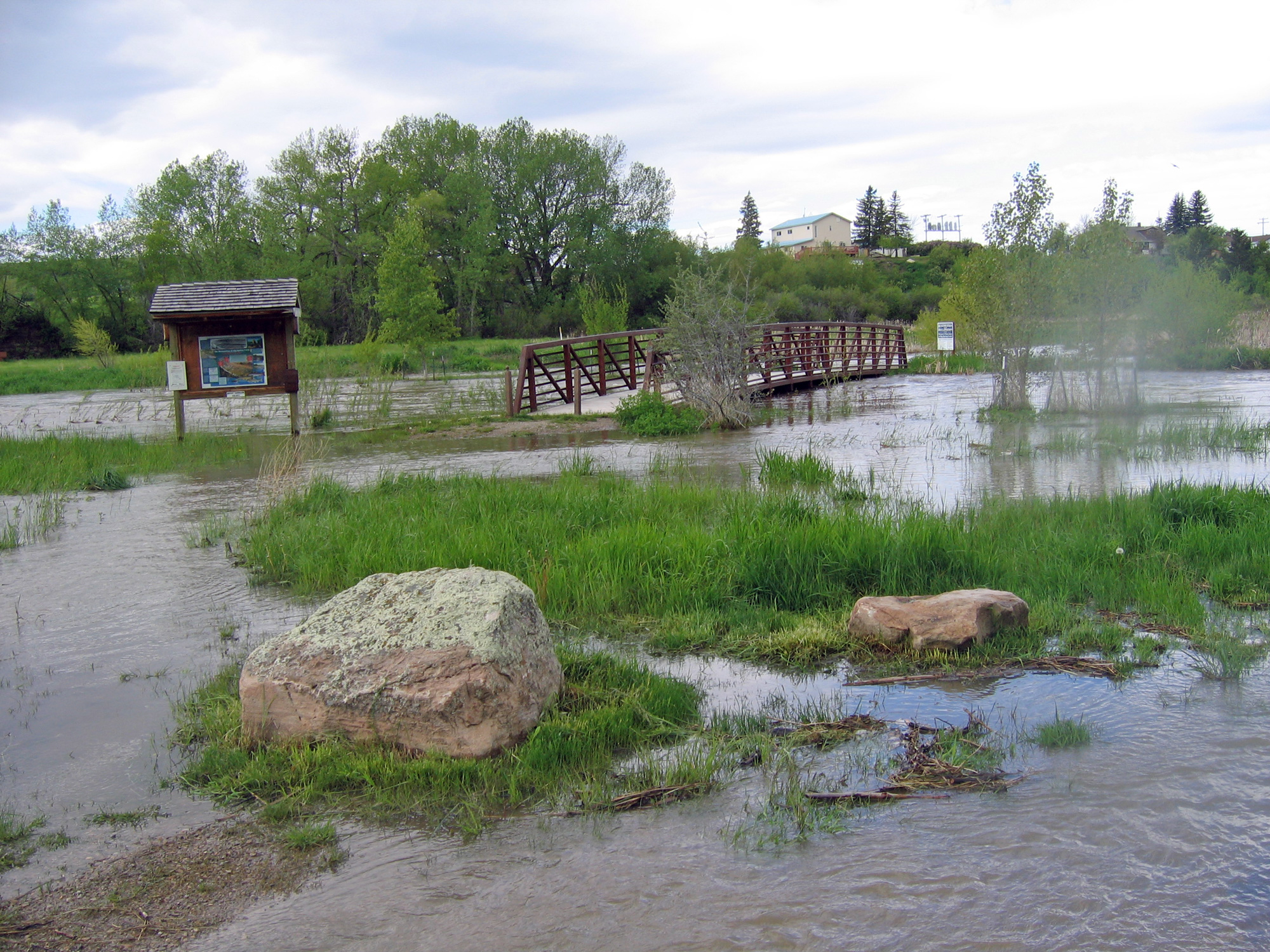
No Comments